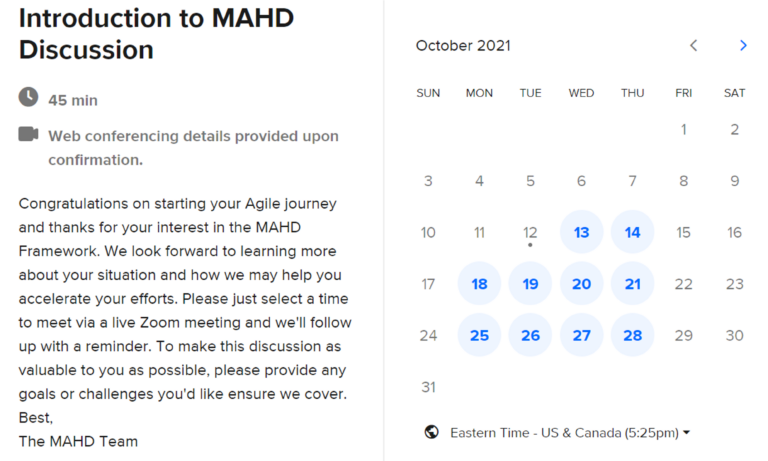Introduction
To attempt a subjective comparison of the various agile frameworks vs. the MAHD Framework, we asked ChatGPT for a direct comparison with:
- SAFe® for Hardware
- Joe Justice xTreme Manufacturing
- Scrum for Hardware
- Agile Stage-Gate®
In this blog, we asked ChatGPT to compare Joe Justice’s agile approach based on his experiences with Tesla vs. the MAHD Framework’s approach using this prompt:
“Compare the advantages and disadvantages of joe justice agile vs the MAHD Framework”
After the unedited ChatGPT’s response, we offer a brief commentary.
ChatGPT4.0 Response:
Comparison of Joe Justice’s Agile for Hardware vs. the MAHD Framework
Joe Justice’s Agile Approach:
Core Philosophy:
Joe Justice’s agile methods, like eXtreme Manufacturing and Scrum@Hardware, focus on cross-functional teams, rapid development cycles, and a deeply collaborative work culture. His approach emphasizes speed and adaptability by empowering engineers to make quick decisions, supported by automated processes and AI. He’s known for implementing this at Tesla, where unconventional leadership structures and a flat organizational hierarchy enabled rapid product innovation and a high degree of ownership and accountability.
Strengths:
- High adaptability to changing requirements and external factors.
- Strong emphasis on cross-functionality and integrated teams.
- Effective for companies that want to achieve rapid prototyping and iteration.
- Encourages a work culture of shared responsibility and decision-making at all levels
Challenges:
- May be difficult to implement in more traditional organizations without a complete cultural shift.
- High reliance on technology and automation to support decision-making.
- Can create confusion if existing roles and leadership structures are not redefined to fit the new model.
MAHD Framework:
Core Philosophy:
The MAHD Framework (Modified Agile for Hardware Development) adapts core agile principles specifically for hardware development. It addresses the unique constraints and complexities of physical product development, such as long development cycles, hardware dependencies, and supply chain management. The framework is built on incremental cycles with two levels of learning: high-level IPAC iterations and smaller sprints, making it more structured and disciplined compared to other agile frameworks.
Strengths:
- Custom-tailored for hardware, with considerations for mechanical, electrical, and physical prototyping.
- Supports concurrent engineering and integrates traditional engineering processes with agile principles.
- Includes flexible prototyping and testing strategies, allowing teams to refine product designs iteratively without needing to complete a full design before building.
- Utilizes a detailed IPAC (Integration, Prototype, Alignment, Customer Engagement) model to guide development.
Challenges:
- May require more upfront planning compared to Joe Justice’s rapid-start methods.
- Iterative processes might seem slow or rigid in environments seeking quick turnaround without structured milestones.
- Needs adaptation to fit in organizations used to traditional project management styles (e.g., Stage-Gate).
Conclusion:
Joe Justice’s agile approach is ideal for organizations seeking radical transformation with a high emphasis on speed, flat organizational structures, and rapid prototyping. It’s particularly effective in tech-driven environments where teams can function autonomously with minimal bureaucracy.
In contrast, the MAHD Framework offers a structured yet flexible methodology for hardware development, integrating traditional engineering processes with agile principles. It’s better suited for organizations looking to enhance their agility while maintaining discipline and control over the complexity of hardware projects.
Recommendation:
The best choice depends on your organization’s culture and specific project needs. If you need speed and are ready for a cultural shift, Joe Justice’s methods are effective. If you need a structured approach to blend agile with hardware’s inherent complexities, the MAHD Framework may be a better fit.
Our Commentary:
Overall, we agree with ChatGPT’s assessement. From our research and conversations with customers who have looked at both the MAHD Framework and Joe Justice’s framework, the most common words we hear about Joe Justice’s approach is “radical”, “disruptive”, and “rapid”. For the MAHD Framework we hear “focused”, “versatile”, and “practical”. Both of the approaches aim for, and have case studies to support, speed, efficiency and focus, but there are pros and cons to these words. Such as if an organization is desirous and READY for a major change top-down, than Joe Justice’s approach will force this. The MAHD Framework approach is a more middle-down, middle-up approach that helps teams and product groups build agile skills first and drive cultural change from within. There is rarely one BEST approach to all situations. It’s up to the organization to determine what is best for their needs.






